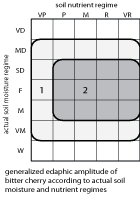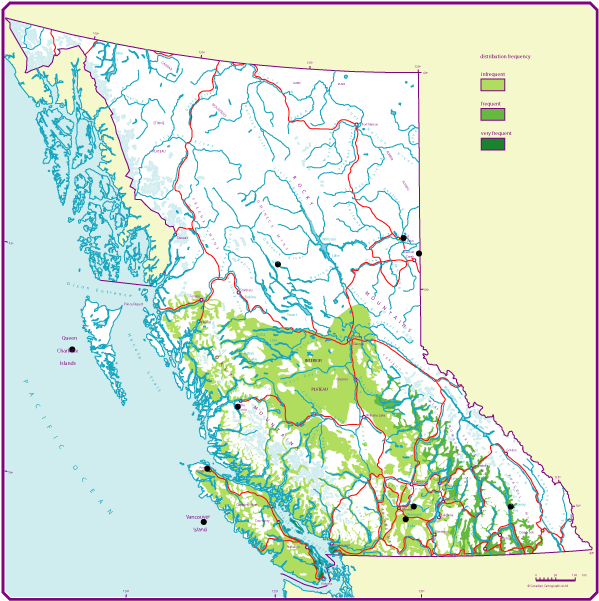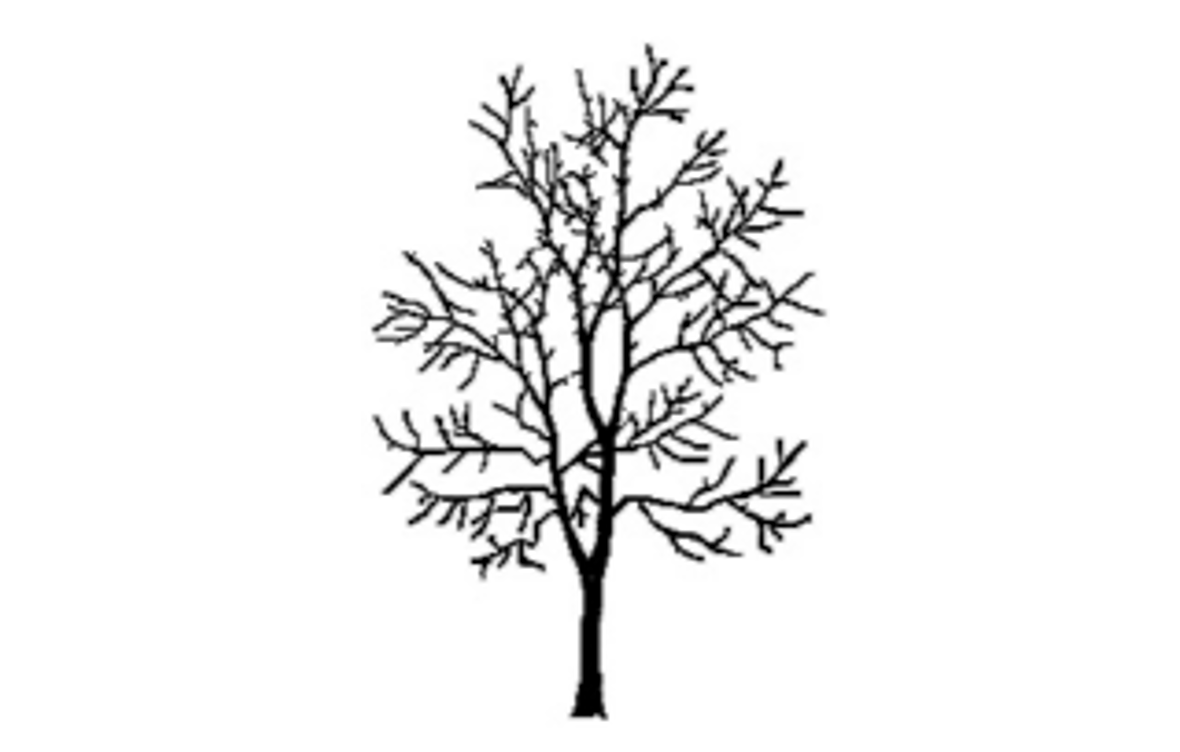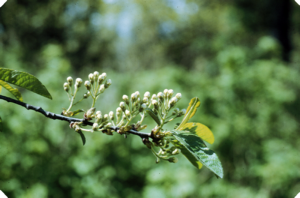Bitter cherry
Bitter cherry (Vb) - Prunus emarginata
Bitter cherry is a small-, less often, medium-sized (<15m tall), deciduous broad-leaved tree, at maturity with a narrow crown, slender stem, ascending branches, and smooth, dark reddish-brown bark.
Bitter cherry is not grown for timber production, as its wood is of little commercial value. In continental temperate climates, it hybridizes frequently with pin cherry (Prunus pensylvanica L. f.).
On this page
- Geographic range and ecological amplitudes
- Tolerances and damaging agents
- Silvical characteristics
- Genetics and notes
Geographic range and ecological amplitudes
Geographic range
Geographic element:
Western North American/mainly Pacific and less Cordilleran
Distribution in western North America:
Central and south in the Pacific region; central and south in the Cordilleran region
Ecological amplitudes
Climatic amplitude:
(subalpine boreal) - montane boreal - cool temperate - cool and warm mesothermal
Orographic amplitude:
submontane - montane - (subalpine)
Occurrence in biogeoclimatic zones:
(lower ESSF), (MS), (SBS), (SBPS), (PP), (IDF), ICH, CDF, CWH
Edaphic amplitude

Range of soil moisture regimes:
(moderately dry) - slightly dry - fresh - moist – (very moist)
Range of soil nutrient regimes:
(very poor) - poor - medium - rich - very rich
Tolerances and damaging agents
Root system characteristics
Bitter cherry has a shallow root system with many lateral branches.
| Tolerance to | Tolerance class | Comments |
|---|---|---|
| low light | M | frequent in open canopy stands |
| frost | M | frost not a major concern in cool mesothermal climates |
| heat | M | frequent on insolated sites |
| water deficit | L | infrequent on dry sites |
| water surplus | H | tolerates flooding and a strongly fluctuating water table |
| nutrient (mainly N) deficiency | H | frequent in acid, very poor soils |
Associated tree species and successional role
In British Columbia, bitter cherry grows very scattered in coniferous or hardwood stands in the early stages of secondary succession. It is less frequent in the intermediate stages as its life span is only up to 80 years.
Genetics and notes
Notes
The early growth of bitter cherry is rapid but later, especially in high-density stands, bitter cherry is overgrown by more shade-tolerant tree species. Although not grown commercially for timber production, it is a useful component in early seral stages as it protects the soil, and many birds and mammals eat its fruit, buds, or foliage and twigs. However, its fruit are too bitter for the human palate without the addition of ten times the amount of sugar.



